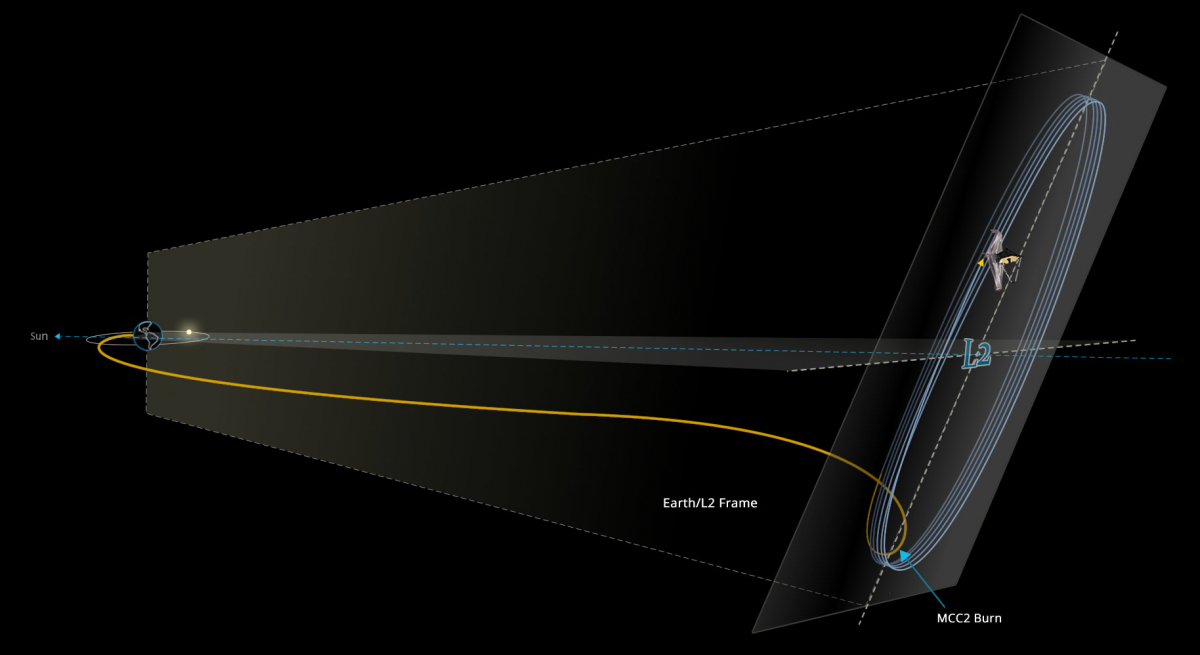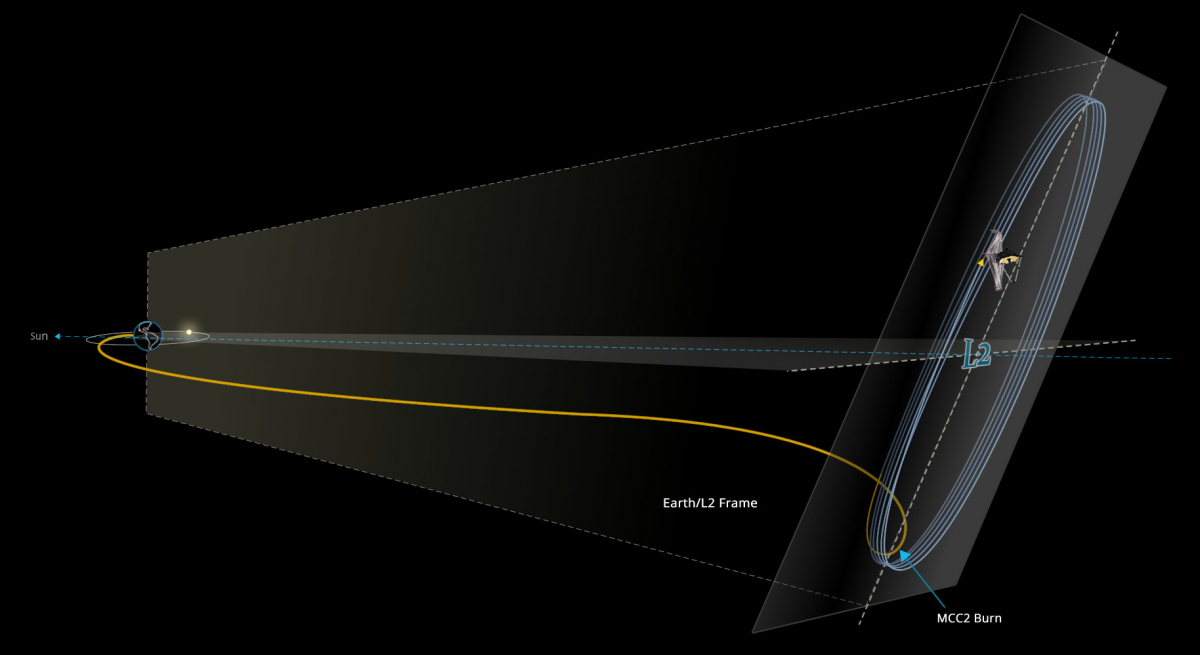Recent searches
Search options
#Lagrange
New French Brasserie, La Grange, to Open in Yardley https://www.diningandcooking.com/1990273/new-french-brasserie-la-grange-to-open-in-yardley/ #BucksCountyBusinessNews #francais #france #French #FrenchLunch #GrandOpening #LaGrange #lunch #Restaurants
Lagrange-Punkte sind Orte im Weltraum, an denen sich die Gravitationskräfte zweier Himmelskörper so ausgleichen, dass ein Flugkörper dort einfach "parken" kann. Wir erklären, was an bestimmten L-Punkten geplant ist.
#Astronomie #Weltall #Raumfahrt #Lagrange
https://t3n.de/news/james-webb-teleskop-satelliten-parkplaetze-1677195/

Lagrange-Punkte sind Orte im Weltraum, an denen sich die Gravitationskräfte zweier Himmelskörper so ausgleichen, dass ein Flugkörper dort einfach "parken" kann. Wir erklären, was an bestimmten L-Punkten geplant ist.

Domingo de lectura #gemini #lagrange @beckermatic sos vos?
— Jakim, kurwa, cudem? — warknął Styx. — Sieci kognitywne w krzemianowym śluzie? I co one tam regulują? Na co reagują? Na ciemność? Zimno? Brak azotu?
Zacisnął pięści.
— A fale pragnień? — ciągnął. — Piana spełnienia? Tęcza, kurwa, tęcz?
Tamci patrzyli w milczeniu, jak miota się i ciska.
— I jeszcze łaskawy zachwyt spływający z wysokości. Ja pierdolę!
— Co cię tak wkurza? — spytała w końcu Ana.
— Zachwycony tęczą szlam mnie wkurza! Jaką, kurwa, tęczą? Tam ponoć jest ciemno!
I'm really liking #Lagrange on Linux so far. I'm looking for a good client on Android, but it doesn't seem like things are updated very often over there. Maybe I'll just browse #Gemini on my laptop/desktop.
And how is everybody managing certs/accounts? Do you just back them up regularly? I'd love something to keep my certs sync'd between devices.
Would appreciate any advice!
@linuxnews Klar: #Lagrange @lagrange - Web ohne HTML und HTTP.
@jk I challenge people to check out #geminiprotocol with #lagrange browser.
You will encounter some new awkward terminology (gemini capsules and whatnot), but also roughly 100 % of the things that are wrong with "The Internet" will disappear at the same time.
This current mess that is built on top of http cannot be fixed by adding yet another js gimmick or framework.
Less is more.
Otra semana sin trabajar con sistema de ventanas, viva el #softwarelibre !!!
#ViernesDeEscritorio #popos #fedora #arch #gemini #lagrange
#Figueiredo sensed the need for some new magic firsthand during the waning months of the pandemic.
She was struggling with a task that has challenged physicists for more than 50 years:
predicting what will happen when quantum particles collide.
In the late 1940s, it took a yearslong effort by three of the brightest minds of the post-war era
— Julian #Schwinger, Sin-Itiro #Tomonaga and Richard #Feynman
— to solve the problem for electrically charged particles.
Their eventual success would win them a Nobel Prize.
Feynman’s scheme was the most visual, so it came to dominate the way physicists think about the quantum world.
When two quantum particles come together, anything can happen.
They might merge into one, split into many, disappear or any sequence of the above.
And what will actually happen is, in some sense, a combination of all these and many other possibilities.
Feynman diagrams keep track of what might happen by stringing together lines representing particles’ trajectories through space-time.
Each diagram captures one possible sequence of subatomic events
and gives an equation for a number,
called an “amplitude,”
that represents the odds of that sequence taking place.
Add up enough amplitudes, physicists believe, and you get stones, buildings, trees and people.
“Almost everything in the world is a concatenation of that stuff happening over and over again,” Arkani-Hamed said.
“Just good old-fashioned things bouncing off each other.”
There’s a puzzling tension inherent in these amplitudes
— one that has vexed generations of quantum physicists going back to Feynman and Schwinger themselves.
One might spend hours at a chalkboard sketching Byzantine particle trajectories and evaluating fearsome formulas only to find that terms cancel out
and complicated expressions melt away to leave behind extremely simple answers
— in a classic example,
literally the number 1.
“The degree of effort required is tremendous,” Bourjaily said.
“And every single time, the prediction you make mocks you with its simplicity.”
Figueiredo had been wrestling with the strangeness of the situation when she attended a talk by #Arkani-#Hamed,
a leading theoretical physicist at the IAS who has spent years seeking a new way of getting the answers without Feynman diagrams.
She found her way to a series of his lectures on YouTube, in which he showed how
— in special cases
— one could jump straight to the amplitude of a certain outcome of a particle collision without worrying about how the particles moved through space.
Arkani-Hamed’s shortcuts, which involved reverse-engineering answers that satisfy certain fundamental logical requirements,
confirmed Figueiredo’s suspicions that alternative methods were out there.
“By asking for these very simple things you could just get the answer.
That was definitely striking,” she said.
She began to regularly make the half-hour walk from Princeton’s campus to the IAS to work with Arkani-Hamed,
a force of nature who runs on Diet Coke and an inexhaustible enthusiasm for physics.
Arkani-Hamed and his collaborators aspire to bring about a conceptual revolution of the sort that rocked physics in the late 1700s.
Joseph-Louis #Lagrange didn’t discover any forces or laws of nature, but every physicist knows his name.
He showed that you could predict the future without laboriously calculating actions and equal-and-opposite reactions in the style of Isaac Newton.
Instead, Lagrange learned to predict the path an object will follow by considering the energies that different paths require and identifying the easiest path.
Lagrange’s method, despite seeming like a mere mathematical convenience at the time,
loosened the straitjacket of Newton’s mechanistic view of the universe as a sequence of falling dominos.
Two centuries later, Lagrange’s approach provided Feynman with a more flexible framework that could accommodate the radical randomness of quantum mechanics.
Now many amplitudes researchers hope a reformulation of quantum physics will set the stage for the next physics revolution,
a theory of quantum gravity and the origin of space-time.
Der Schlüssel zu den interessanten Regionen des Sonnensystems

Attention-Worthy Links for December 11th, 2024
#Electricity #SMR #X-energy #Kairos #TRISO #pebble #encapsulation #England #trespassing #commoning #92% #seizure #depletion #collective #resources #carbon-fiber #CFRPs #Aspergillusnidulans #OTA #Overhuman #Nietzsche #Zarathustra #clairvoyant #futurist #hydrogen #Mark-17 #Albuquerque #B-36 #conventional #Broken #Arrow #Hummingbird #cubesat #NEO #Lagrange #L3Harris #graphene #interconnect #micro-electronics #TSMC #CMOS
Como mi #EscritorioGNULinux no ha cambiado últimamente, este #ViernesDeEscritorio comparto la vista panorámica de #KDEplasma, a dos monitores que es como lo dispongo en la oficina.
Salen: #CoolRetroTerm #Thunderbird #Firefox #Lagrange #Konsole #Dolphin
Publicación amigable con el ambiente, evadí la tentación de usar IA para el #altText.
New software review on my website!
Lagrange (Gemini Client)
★★★★★
Lagrange quickly became my favorite Gemini client on the desktop with its clean and convenient UI, stability and speed across platforms, and the mobile version works well too.



 Leo
Leo 